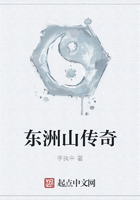It is a commonplace that murder without motive is the hardest to detect.The deaths that Helene Jegado contrived between 1833 and 1841, twenty-three in number, and the six attempts at murder which she made in that length of time, are, without exception, crimes quite lacking in discoverable motive.It is not at all on record that she had reason for wishing to eliminate any one of those twenty-three persons.She seems to have poisoned for the mere sake of poisoning.Save to the ignorant and superstitious, such as followed her in the streets to accuse her of having a white liver'' and a breath that meant death, she was an unfortunate creature with an odd knack of finding herself in houses where`accidents' happened.Time and again you find her being taken in by kindly people after such `accidents,' and made an object of sympathy for the dreadful coincidences that were ****** her so unhappy.It was out of sympathy that the Widow Lorey, of Locmine, took Helene into her house.On the widow's death the niece arrived.In court the niece described the scene on her arrival.Helene embraced me,'' she said.'Unhappy me!' she wept.`Wherever I go everybody dies!' I pitied and consoled her.'' She pitied and consoled Helene, though they were saying in the town that the girl had a white liver and that her breath brought death!
Where Helene had neglected to combine her poisoning with detected pilfering the people about her victims could see nothing wrong in her conduct.Witness after witness --father, sister, husband, niece, son-in-law, or relation in some sort to this or that victim of Helene's--repeated in court,The girl went away with nothing against her.'' And even those who afterwards found articles missing from their household goods: At the same time I did not suspect her probity.She went to Mass every morning and to the evening services.I was very surprised to find some of my napkins among the stuff Helene was accused of stealing.'' I did notknow of Helene's thefts until I was shown the objects stolen,'' said a lady of Vannes.Without that proof I would never have suspected the girl.Helene claimed affiliation with a religious sisterhood, served very well, and was a worker.''
It is perhaps of interest to note how Helene answered the testimony regarding her thieving proclivities.Mme Lejoubioux, of Vannes, said her furnishing bills went up considerably during the time Helene was in her service.Helene had purloined two cloths.
Helene: That was for vengeance.I was furious at being sent away.
Sieur Cesar le Clerc and Mme Gauthier swore to thefts from them by Helene.
Helene: I stole nothing from Mme Gauthier except one bottle of wine.If I commit a larceny it is from choler.WHEN I'M FURIOUS I STEAL!''
It was when Helene began to poison for vengeance that retribution fell upon her.Her fondness for the bottle started to get her into trouble.It made her touchy.Up to 1841 she had poisoned for the pleasure of it, masking her secret turpitude with an outward show of piety, of being helpful in time of trouble.By the time she arrived in Rennes, in 1848, after seven years during which her murderous proclivities seem to have slept, her character as a worker, if not as a Christian, had deteriorated.Her piety, in the face of her fondness for alcohol and her slovenly habits, and against her now frequently exhibited bursts of temper and ill-will, appeared the hypocrisy it actually was.Her essays in poisoning now had purpose and motive behind them.Nemesis, so long at her heels, overtook her.
It is not clear in the accounts available to me just what particular murders by poison, what attempts at poisoning, and what thefts Helene was charged with in the indictment at Rennes.Twenty-three poisonings, six attempts, and a number of thefts had been washed out, it may be as well to repeat, by the prescription legale.But from her arrival in Rennes,leaving the thefts out of account, her activities had accounted for the following: In the Rabot household one death (Albert, the son) and three illnesses (Rabot, Mme Rabot, the mother-in-law); in the Ozanne establishment one death (that of the little son), in the hotel of the Roussells one death (that of Perrotte Mace) and one illness (that of the Veuve Roussell); at the Bidards two deaths (Rose Tessier and Rosalie Sarrazin).In this last establishment there was also one attempt at poisoning which I have not yet mentioned, that of a young servant, named Francoise Huriaux, who for a short time had taken the place of Rose Tessier.We thus have five deaths and five attempts in Rennes, all of which could be indictable.But, as already stated, the indictment covered three deaths and three attempts.
It is hard to say, from verbatim reports of the trial, where the matter of the indictment begins to be handled.It would seem from the evidence produced that proof was sought of all five deaths and all five attempts that Helene was supposed to be guilty of in Rennes.The father of the boy Ozanne was called before the Rabot witnesses, though the Rabot death and illnesses occurred before the death of the Ozanne child.We may, however, take the order of affairs as dealt with in the court.We may see something of motive on Helene's part suggested in M.Ozanne's evidence, and an indication of her method of covering her crime.















